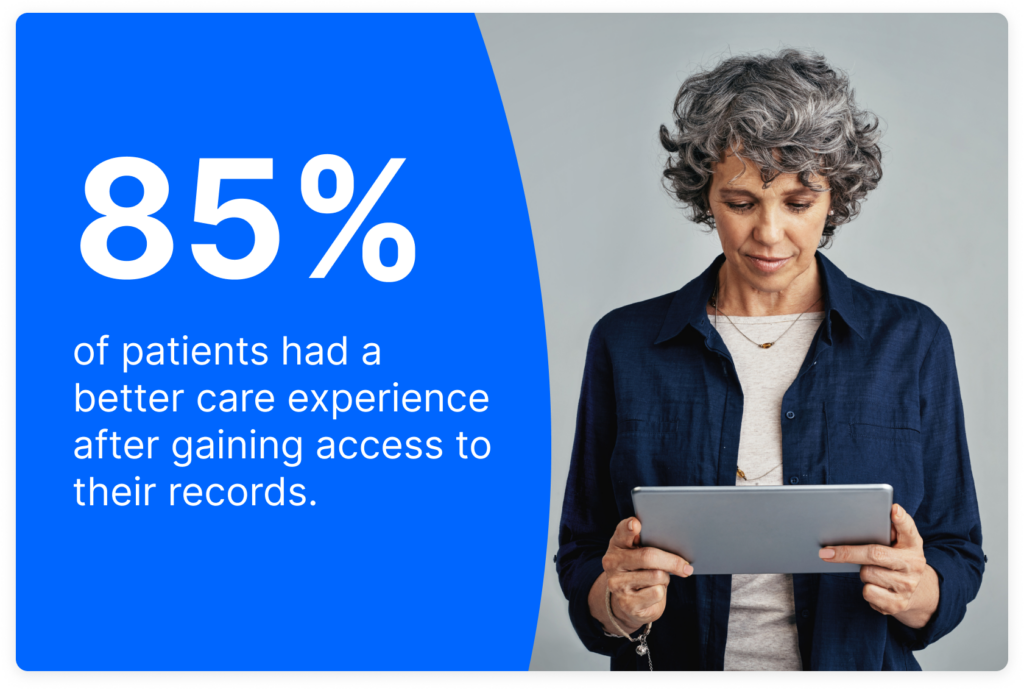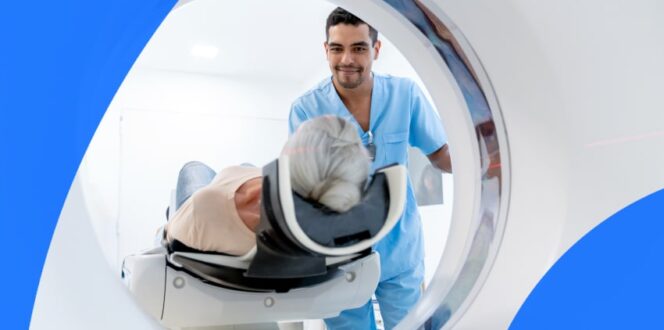How Can Accessing Your Records Improve Your Healthcare Experience?

Why should you have access to your medical records? Because transparency builds trust and gives you the tools you need to take full control of your care.
This past summer, PocketHealth conducted a small patient survey to understand how visibility into their own health records impacts their healthcare experience. The survey found that an overwhelming majority value transparency, with 85% saying their healthcare experience improved after gaining access to their medical imaging.
This level of patient satisfaction is not surprising and many physicians have championed information transparency for decades, like Dr. Tom Delbanco. Back in the 1970s, he was one of the few clinicians who shared his notes with patients and consequently, he observed a real difference in their progress. Delbanco then established OpenNotes, an international movement that supports transparency in healthcare. It inspired healthcare professionals everywhere to write patient-centered notes on their reports.

At the Legislative Level
Efforts like OpenNotes recently saw their hard work payoff: the Office of the National Coordinator for Health Information Technology (ONC)—the federal agency that regulates EHRs—in 2021 updated the U.S. Core Data for Interoperability, a set of information that all EHR systems must be able to share with each other.
Among the updates made in 2021, ONC included data on social determinants of health – in other words, insights that can tell us how socioeconomic status and lifestyle contribute to certain health outcomes so public health agencies and researchers can mitigate the disparities affecting vulnerable people. It demonstrates how maintaining health data across networks benefits patients both on an individual and collective level. More data means more evidence to help further research, legislation and funding for community health centers.
Staying Prepared. Just in Case
Accessing electronic health records doesn’t just facilitate a dialogue between patients and their doctors, it can also serve as an insurance policy. With 33% of patients receiving incorrect test results or a report error and 46% experiencing a misdiagnosis, patients are looking for ways to protect themselves from potentially fatal mistakes.
There are dozens of stories of patients who found abnormalities on their scans that previously went unchecked. PocketHealth provides patients with access to their imaging records, including the report notes. It’s how Mary, a PocketHealth user, caught a directive from the radiologist on her mammogram. The clinic told her she only needed a mammogram every other year, but when she checked her imaging report, it said she needed to go every year. She believes she would not have known that important distinction if she did not have access to her imaging.
In this case, patients who are left in the dark, often fall through the cracks. But PocketHealth gives patients fast, easy and secure visibility into their imaging records and allows them to navigate the healthcare system, minding the gaps that serve as barriers to better outcomes.
Speeding Up the Process
The benefits of having access to your imaging records with PocketHealth go beyond just having information, it can also reduce delays in care. Normally, clinics store imaging on CD roms which often require patients to pick up from the imaging clinic and drop off at their physician’s office. Sometimes, this could take days or even weeks for patients to receive these discs. But when imaging is stored electronically and made accessible to the patient, they can receive their records much faster and instantly share imaging with their doctors with just a few clicks.
One patient, Dan, experienced real acceleration in his care after his emergency X-rays revealed he had fluid in his lungs. A few days later, Dan was at his local hospital and the doctor needed immediate access to his previous imaging to compare with the current ones. He was able to provide his imaging on the spot by accessing PocketHealth on his phone and was referred for surgery a few days later. If he didn’t have those records readily available, he would have to wait weeks for his doctor to receive them and subsequent weeks for a surgery date. “PocketHealth saved me a week and a half of pain from a broken collarbone by getting my surgery expedited,” said Dan. “It also allowed me to have surgery at my preferred hospital. I was very grateful.”
But Does it Impact Outcomes?
In a recent interview with The Harvard Gazette, Delbanco explains, “studies also show that you forget half of what happened in the office, because for so many of us it’s such a stressful situation. Now you can go home, look at your notes and remember, “That’s the test I’m supposed to schedule. That’s the medicine I’ve agreed to take.”
It’s important to recognize, however, that transparency does not equal treatment. Outcomes can only be furthered when patients take action and use their information to engage with their care.
Published: November 24, 2022
Trusted by more than 800+ hospitals and clinics.



















